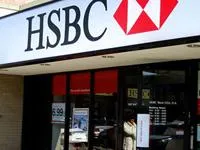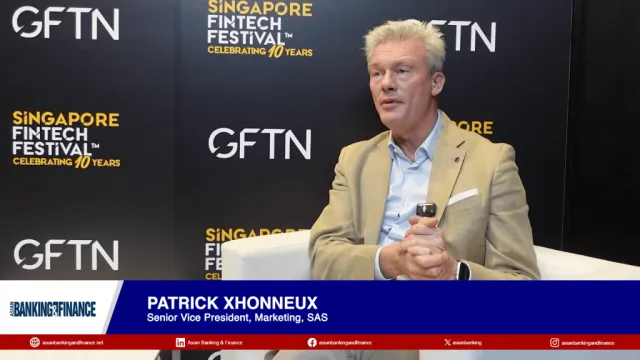Technology
Westpac improves online trading platform
Westpac improves online trading platform
iPhone, iPod Touch and HTC Dream users can keep track of investments wherever they are.
EMV standards body to host annual user meeting
Forum to provide update on technical advances of the EMV standard and future developments.
HSBC launches new investment solution for unit trusts
FundMax enables unlimited transactions and switching between funds for a single monthly fee.
SBI selects 2 US firms for POS terminals
Lender picks Visa International and Elavon to distribute 600,000 POS terminals over the next 5 years.
HDFC intensifies online security to widen reach
Low-risk online transactions are now covered by lender’s Security Access as part of lender’s IT spending.
Commonwealth puts new contactless payment system to test
System enables to make purchases of less than $91 without needing PIN or signature.
Discover deploys Teradata Purpose-Built Platform Family
In addition to its existing Teradata Active Enterprise Data Warehouse, Discover Financial Services now uses Teradata appliances to support operational and non-traditional data warehousing applications.
Punjab National Bank website attacked by malware
Damages to customers' PCs have been done as hackers were able to penetrate PNB website.
Islamic Banking creates new horizons for banking solutions
The last few years have experienced a rapid growth of Islamic banking and finance services around the globe. GCC and Southeast Asian countries pioneered Islamic banking and finance. Though estimates vary, there is little dispute that annual global growth is consistently in the double digits and that Islamic finance assets under management are currently valued at more than US$400 billion.
Customer Profitability Insight is Key to a Customer Equity Optimization Strategy
In the current economic environment, many organisations seek to become more customer-focused, and this requires fresh, detailed high-quality data. Silos of customer information slow down the progress toward becoming a customer-savvy company – resulting in a fragmented view of the customer and individual departments that struggle to be effective in customer contact. There is no silver bullet for customer focus. It’s a long process that will likely involve changes to business processes, company culture and technology. However, there is a common starting point that is shared by many of the organisations that have successfully embarked on this journey – the measurement of customer profitability and lifetime value as the foundation for a Customer Equity Optimisation strategy. Years ago Gartner* reported that “Customer Relationship Management (CRM) refers to the concept of moving ownership of the customer up to the enterprise level and away from individual departments and channels. These departments are responsible for customer interactions, but the enterprise is responsible for the customer.” Customer centricity has to be an enterprise level strategy. Frontline employees and departments have their own specific responsibilities and priorities. It is the enterprises’ responsibility to provide an environment – culture, technology and information – that enables employees to serve their customers in a way that acknowledges the customer as a whole. Companies which are now practicing enterprise-level customer management are enjoying dramatic success. Many have put Customer Equity Optimisation at the heart of their efforts. Their executives understand, track and articulate the value of their customer equity and know how their business is optimising customer equity. It all starts with an executive commitment to increasing the value of each customer relationship to the business with every interaction – while also increasing the value of the business to select customers. This commitment must be backed by accurate and timely information. Enterprise profitability analytics encompass every dimension of customer management including behaviours and transactions as well as expenditures and business activities across the enterprise. By integrating customer lifetime value calculation tools with analytical CRM there are tremendous opportunities to understand and grow customer equity. However, only with an effective and comprehensive customer profitability model and analytics can a company understand which of its customers are contributing, how much and why. Customer profitability should not be viewed as a gauge of the customer’s value; instead, it is a measurement of the value of a company’s customer-business interface – how well a company understands, informs, serves and profits from its CRM efforts. To effectively interact with each customer at any given touchpoint you need to understand what customers actually value. From a humanistic standpoint, successful firms understand customer needs and desires and meet them with relevant and timely offers. Analytical CRM can provide an understanding of the economic drivers and variables in each relationship and, therefore, useful clues to customer needs. It was not until recently that technology tools were developed to measure and optimise customer equity at a deeply detailed level on an enterprise scale. Working together in the late 1990s, the Royal Bank of Canada (RBC) and Teradata developed a data warehouse-driven value engine which accurately measures and tracks customer profitability. Since then RBC has used profitability analytics and event-driven customer relationship management to optimise customer equity and increase shareholder value. RBC had already been experimenting with customer profitability measurement. The key lesson learned was that truly useful customer profitability models had to begin with detailed, accurate, account or customer level activity-based costing information. A substantial challenge as it required close cooperation between Finance, Marketing, and IT, however all parties recognised the value of the effort.The bank found that profitability rankings changed by at least two deciles for 75% of customers, highlighting the improved accuracy. Further, RBC realised that customer profitability calculations were not enough. It came to understand that customers can be both profitable and have the potential to be profitable, and that the bank needs both kinds. Customer lifetime value tools, using historical profitability information, enabled RBC to determine which customers had high potential to be profitable in the longer term. Once the bank had the tools and processes in place to determine customer profitability and lifetime value, it included those measures when making customer decisions. This encompassed customised marketing campaigns, alignment of pricing discretion and service levels based on relationship depth (products held) and potential (lifetime value). The insights gained from RBC’s deep access to detailed customer information are used to guide organisational strategy and structure as well as daily decisions made by thousands of customer-facing employees. RBC is uniquely successful among customer equity-optimising companies because it incorporates a deep understanding of customers into all of its day-to-day operations. Employees are given the freedom and latitude to use the value of customer focus in nearly all their actions. This ‘scientific’ marketing focus is increasingly going to become the rule rather than the exception, as the value of customer relationships is understood as the key driver of a firm’s market value. The practice of Customer Equity Optimisation is important for more reasons than its impact on shareholder value – but that in itself is certainly good reason to take the approach and put it to the test.* Gartner Research Note, Ferrara and Nelson, June 4, 2001
The Asian IT industry amid crisis - opportunity or threat?
The banking world hasn't been as dynamic as we see it today and bankers are looking at technology as an enabler to meet up with the challenges of ever changing banking industry.
Bendigo, Suncorp plan on sharing ATM networks
Connection of about 1600 ATMs of two banks could be accomplished by March 2010.
HSBC has new personalized touchscreen ATMs
New touchscreen ATMs with personalisation functions were introduced in seven HSBC sites across Hong Kong. Taking the lead in personal financial services, the ATMs offer new functions including a simplified screen flow process, personalised settings, a bill payment barcode reader and full colour screens.
DBS, State Bank of India to launch service
New online remittance service can transfer money from Singapore to India in no time. Through the service, known as 'DBS2SBI Remittance', DBS/POSB customers will now be able to transfer funds quickly and conveniently to beneficiary accounts at over 16,000 SBI branches, as well as to 30,000 other branches in India, according to a report in BankingBusiness Review. Rajan Raju, head of consumer banking at DBS, said: "We are constantly exploring opportunities to offer greater convenience to our customers. India is one of the key recipients of home remittance from Singapore. We currently offer direct remittance service from DBS/POSB accounts in Singapore to accounts with 10 DBS branches across India." Seah Boon Ching, head of consumer banking at SBI Singapore, said: "SBI is a household name in India, and it is only natural and makes perfect sense for us to partner with a bank which resonates similarly in Singapore. Establishing this arrangement with DBS marks another milestone we've achieved since attaining our QFB license in Singapore. "Through this tie-up with DBS, we are able to provide speed, convenience and ease to customers banking with DBS/POSB, who wish to send remittance to our clients of the SBI Group in India."
State Bank of India orders ATMs from Wincor Nixdorf
Wincor Nixdorf executive Ricardos Khoury said State Bank of India plans to install 1,000 more branches and upgrade its services.
RHB wins tech award with SunGard's solution
RHB Bank received Celent's 2009 Model Bank of the Year award for its use of SunGard's Ambit Treasury Management solution.
Baiduri clients heed call to pay electronically
Baiduri Bank’s 'Bill Payments Made Easy Promotion' received an overwhelming response from clients, increasing the number of bill payments made via E-Channels. Available up to 15 August 2009, users are automatically entered into a draw and each month three lucky winners will win cash prizes of BND500.00 or US$699 each.


















 Advertise
Advertise















Commentary
Fighting fraud in the digital banking age
Asian banking’s next frontier: Beyond growth, embracing precision